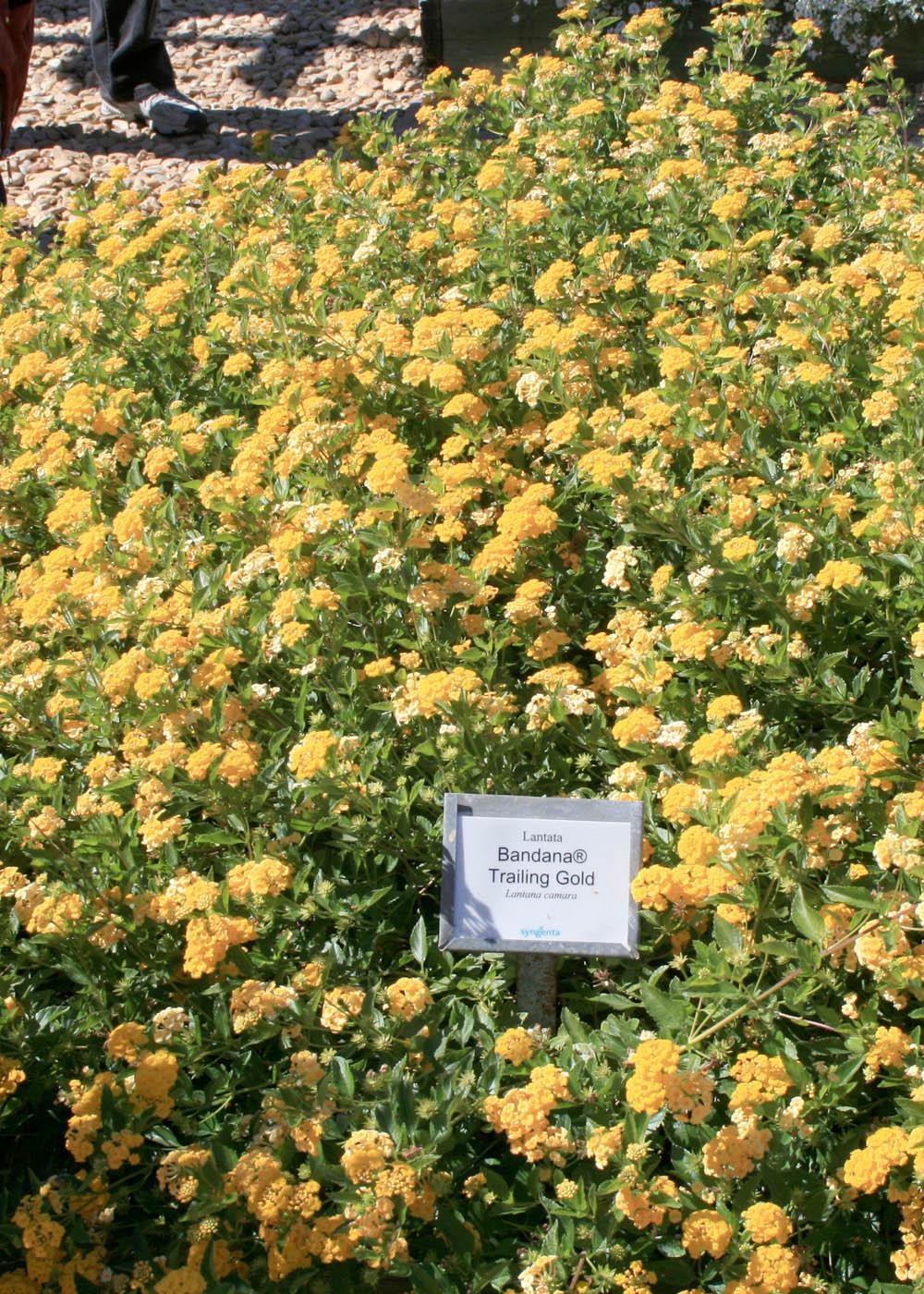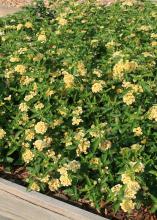Information Possibly Outdated
The information presented on this page was originally released on June 18, 2012. It may not be outdated, but please search our site for more current information. If you plan to quote or reference this information in a publication, please check with the Extension specialist or author before proceeding.
Lovely lantana blooms nonstop for months
When the Mississippi summer really heats up, lantana is one of my go-to plants. Lantana is a brilliant plant that provides consistently bright colors and nonstop blooming through the summer into fall.
While many of the older lantana selections are large landscape plants, I really like the newer selections that have a smaller growth potential. These smaller plants open up entirely new growing options.
Many of the new, smaller lantanas are being grown in planting trials at various Mississippi State University locations. One popular selection is the Bandana Trailing Gold. This plant has dense branching that reminds me of a vining type of growth. Planting along a hardscape wall is a great way to take advantage of this growth habit. It can grow up to 48 inches in diameter.
Luscious Lemonade lantana is a newer selection that will become more readily available soon. The flowers are sunshine yellow. Early in the morning, the flowers seem two-toned, especially when there is dew on the plant.
New Gold lantana was a Mississippi Medallion winner in 1996. This plant has bright, golden yellow flowers. It grows one to two feet tall and has about a three-foot spread.
Lantana should be planted in the full sun for best flowering performance. Landscape beds should be well drained and amended well with organic matter. Once established, lantana is very drought tolerant. During periods of low rainfall and high temperatures, the flower colors will make your landscape pop.
Light pruning through the summer will help maintain the size plant you want and stimulate a bushier structure with more flowers. Fertilize once a week with water-soluble fertilizer to maintain flowering potential. In the early spring, cut back to about four to six inches to make room for new growth.
Lantana is related to verbena. In fact, in some areas, the common name for lantana is shrub verbena. The botanical name is Lantana camera. Lantanas are hardy to about 32 degrees Fahrenheit and are perennial most years on the coast. If they have a layer of pine straw as a blanket, they may come back after the winter in north Mississippi as well.
Lantanas work well in butterfly and hummingbird gardens. The small, funnel-shaped flowers hold the sugary nectar these garden entertainers are looking for. Strong companion plants are penta, butterfly bush and butterfly weed.









